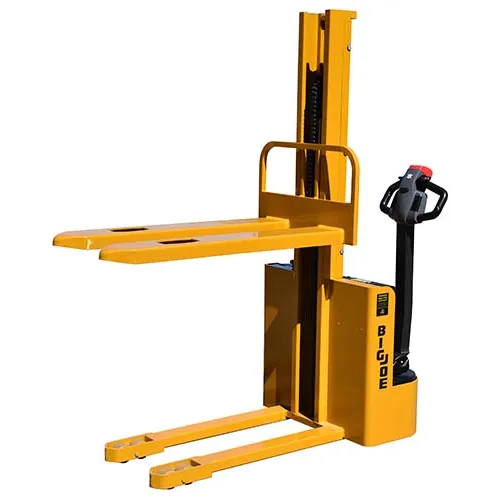Why Are Turkey's Manufacturers Replacing Manual Handling with Pallet Inverters?
Are your warehouse operations a source of constant headaches? You see workers struggling to manually transfer goods from one pallet to another. It's slow, physically demanding, and one wrong move can lead to a cascade of damaged products. This inefficiency creates bottlenecks that ripple through your entire supply chain, delaying shipments and frustrating customers. You know there has to be a better way, a method that is faster, safer, and protects your bottom line.
Turkish manufacturers are replacing manual handling with pallet inverters to achieve three core benefits: dramatic increases in operational speed, significant improvements in worker safety, and a sharp reduction in product damage. This switch allows them to handle goods more efficiently, lower labor-related costs and injuries, and meet the high standards of modern global logistics, making their businesses more competitive and profitable.
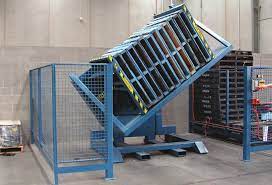
I've been in the packaging machine industry for my entire career, first as an engineer and later as a factory owner myself. I've walked countless factory floors, from small workshops to massive steel mills. The challenges are often the same, no matter the scale. The struggle to move goods efficiently and safely is universal. In this article, I want to share my direct experience and show you exactly why so many forward-thinking manufacturers in Turkey are making this crucial investment. We will look at the specific problems they solve and how this technology delivers a real return on investment.
What specific operational bottlenecks do pallet inverters solve in Turkish factories?
Does your loading dock ever look like a traffic jam? Trucks are waiting, but your team is stuck slowly and carefully restacking goods from your internal wooden pallets to the plastic pallets required by your customer. This single, manual process can hold up an entire shipment, causing delays and potentially damaging your relationship with your clients. You feel the pressure because you know that every minute a truck sits idle, it's costing you money and efficiency. The solution is to automate this critical transfer point.
A pallet inverter directly solves critical operational bottlenecks by automating the transfer of goods between different types of pallets, recovering damaged goods without manual labor, and streamlining the entire receiving and shipping process. This eliminates the slow, error-prone, and labor-intensive task of restacking, instantly speeding up warehouse throughput.
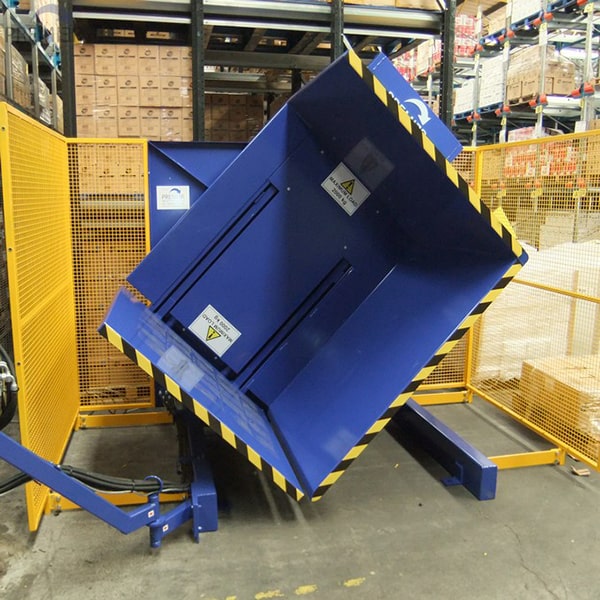
Let's dive deeper into the specific chokepoints that this machine can clear. I see these issues time and again in factories that haven't yet made the switch. The problems are often hidden costs that managers don't fully account for until they see the alternative.
Breaking Down the Bottlenecks
The most obvious bottleneck is the pallet exchange process. Many industries, especially food, beverage, and pharmaceuticals, require goods to be transferred from standard wooden pallets to hygienic plastic or aluminum pallets before entering a clean production area. Manually, this is a tedious job. A team of two workers might take 10-15 minutes to destack and restack a full pallet. A pallet inverter can perform the same task in about 60 seconds with a single operator. The time savings are enormous.
Another significant bottleneck is quality control and damaged goods recovery. Imagine a forklift driver accidentally damages the bottom layer of a pallet loaded with valuable products. Without an inverter, your team has to manually unload the entire pallet just to access and replace the damaged items at the bottom. This stops everything. With a pallet inverter, the operator can simply invert the entire load, easily access the bottom layer, replace the damaged goods, and get the pallet back into the system in minutes. It turns a major disruption into a minor correction.
A Real-World Scenario
I once visited a large bottling plant in the Aegean region of Turkey. Their main bottleneck was transferring finished beverage packs from production pallets to shipping pallets that met European export standards. Their manual process was causing at least two hours of delay per shift and resulted in an average of 2% product damage from dropped cases. After we helped them install a pallet inverter, they eliminated that two-hour delay completely. More importantly, their product damage rate from this specific process dropped to nearly zero. The machine paid for itself in less than 18 months from labor savings and reduced product loss alone.
Here is a simple breakdown of how a pallet inverter transforms these common warehouse tasks:
| Task | Manual Handling Method | Pallet Inverter Method |
|---|---|---|
| Pallet Exchange | 2 workers, 10-15 minutes per pallet. High risk of product drops. | 1 operator, ~60 seconds per pallet. Secure clamping, zero drops. |
| Damaged Goods Recovery | Unload entire pallet manually. Time-consuming, high labor cost. | Invert load, access bottom layer directly. Fast, minimal labor. |
| Order Picking | Manually lift boxes to access lower layers. Ergonomic risk. | Invert load, remove pallet, access all layers safely from top. |
| Freezer Spacer Removal | Manually unstack frozen goods to remove spacers. Slow, cold work. | Invert load, remove spacers, reinvert. Fast and efficient. |
These aren't just small improvements. They represent a fundamental shift in how a warehouse operates, turning major bottlenecks into smooth, efficient, and predictable processes. This stability is what allows a business to scale and compete effectively.
How does the investment in a pallet inverter align with Turkey's push for industrial automation?
You see the reports everywhere. The Turkish government and major industry groups are pushing for "Industry 4.0." They talk about smart factories, automation, and digitalization. As a factory owner, you might wonder how a seemingly simple machine like a pallet inverter fits into this grand vision. You are trying to cut costs and improve efficiency, but you worry that investing in new equipment might not align with these larger national goals, making it harder to secure support or stay ahead of the curve. The reality is, this investment is not just a purchase; it's a foundational step into the future of manufacturing.
Investing in a pallet inverter aligns perfectly with Turkey's push for industrial automation because it is a key enabling technology. It creates the efficiency, consistency, and safety required for more advanced automated systems, like Automated Guided Vehicles (AGVs) and robotic palletizers, to function effectively. It is a practical, first step toward building a smarter, more connected production line.

To truly understand this, we need to look beyond the machine itself and see its role in the larger ecosystem of a modern factory. Automation isn't about buying a single robot; it's about creating a smooth, connected flow. A pallet inverter is often the bridge that makes this flow possible.
The Foundation of End-of-Line Automation
Think of your production line as a chain. A chain is only as strong as its weakest link. For many Turkish factories, the "weak link" is the manual handling that happens at the end of the line. You can have the fastest production machines in the world, but if it takes a team of people 15 minutes to prepare each pallet for shipping, you have a major bottleneck.
A pallet inverter automates this link. By doing so, it creates a predictable and consistent output. This consistency is exactly what more advanced automation needs to work. For example:
- AGVs and AMRs: Automated Guided Vehicles (AGVs) or Autonomous Mobile Robots (AMRs) are designed to transport pallets around a warehouse. They need pallets to be perfectly positioned and ready to go at a specific time. A pallet inverter ensures loads are stable, on the correct pallet type, and ready for pickup without human intervention or delay.
- Automated Stretch Wrappers: High-speed stretch wrappers work best with a continuous, steady flow of pallets. A pallet inverter can feed this system seamlessly, ensuring the wrapper is always utilized and not waiting for manually prepared loads.
- Warehouse Management Systems (WMS): A modern WMS tracks every item in your facility. A pallet inverter can be integrated with scanners and sensors. When a pallet is inverted, its data can be automatically updated in the WMS. For example, it can be logged as "transferred to export pallet" or "quality checked." This removes manual data entry, reduces errors, and provides real-time visibility.
Aligning with National Industrial Goals
Turkey's industrial strategy focuses on increasing value-added manufacturing and boosting exports. To compete with manufacturing powerhouses in Europe and Asia, Turkish companies must be highly efficient and meet stringent international standards.
| Industrial Goal | How a Pallet Inverter Contributes |
|---|---|
| Increased Export Competitiveness | Quickly and safely transfers goods to ISPM-15 compliant or customer-specific pallets, avoiding shipping delays and rejections. |
| Higher Productivity | Dramatically reduces the time and labor needed for material handling tasks, allowing resources to be reallocated to more value-added jobs. |
| Improved Worker Safety | Aligns with modern occupational health and safety standards by engineering out the risks associated with manual lifting. |
| Digitalization (Industry 4.0) | Acts as a key node in an automated system, capable of integrating with WMS and ERP systems for data collection and process control. |
I remember working with a steel parts manufacturer in Bursa. They wanted to bid on a large contract with a German automotive company. A key requirement was a fully traceable and automated material handling process to eliminate any chance of contamination or damage. By installing pallet inverters at the entry and exit points of their finishing line, they were able to create a closed-loop, automated system that met the German company's strict requirements. They won the contract. The inverter wasn't just a machine; it was their ticket to a higher-value market.
Are pallet inverters a cost-effective solution for small to medium-sized enterprises (SMEs) in Turkey?
If you run a small or medium-sized enterprise (SME) in Turkey, every lira counts. You look at large, automated machines and think, "That's for the big corporations, not for me." You believe that sticking with manual labor is the cheaper, safer bet, even if it's slow and causes occasional problems. This hesitation is understandable, but it's often based on a misunderstanding of the true costs of manual labor and the rapid return on investment that a pallet inverter can provide.
Yes, pallet inverters are a highly cost-effective solution for Turkish SMEs because they deliver a rapid and measurable return on investment (ROI). The savings from reduced labor costs, eliminated product damage, and increased operational speed often allow the machine to pay for itself within 12 to 24 months, making it one of the most accessible and impactful automation investments for a growing business.
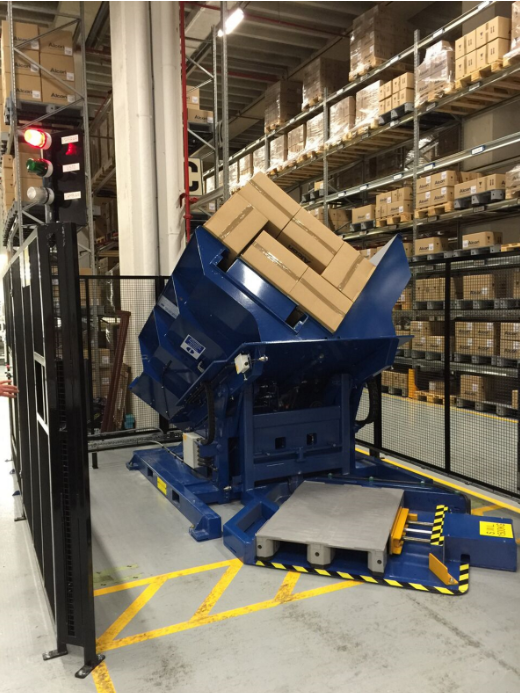
When I started my own factory, I had to justify every single equipment purchase. I didn't have a massive budget. I had to be sure that any machine I bought would start paying for itself immediately. This is the mindset I use when advising SME owners today. Let's break down the real numbers.
Calculating the True ROI
The financial case for a pallet inverter is not complicated. It's based on concrete, daily savings. We need to look beyond the initial purchase price and analyze the "hidden costs" of the manual process you're currently using.
1. Labor Savings: This is the most direct saving. Let's say you have two workers who spend 4 hours per day combined on manually restacking pallets.
- If the average loaded labor cost (including salary, benefits, and taxes) is 150 TRY per hour per worker, that's 2 workers 4 hours/day 150 TRY/hour = 1,200 TRY per day.
- A pallet inverter reduces this task to a single operator for maybe 30 minutes total. The new cost is 0.5 hours * 150 TRY/hour = 75 TRY.
- The daily saving is 1,125 TRY.
2. Reduced Product Damage: This is a huge hidden cost. A single dropped pallet of electronics, food products, or pharmaceuticals can cost thousands.
- Let's assume a conservative estimate of 1% product damage on goods that are manually restacked. If you handle 50,000 TRY worth of such goods per day, that's 500 TRY lost to damage daily.
- A pallet inverter clamps the load securely. The risk of damage drops to virtually zero.
- The daily saving is 500 TRY.
3. Increased Throughput: This is about opportunity cost. What could you be doing with the time you save?
- If manual handling causes your shipping dock to run 2 hours behind schedule each day, that's 2 hours of lost productivity. It might mean you can't load one extra truck per day.
- If one extra truckload represents 5,000 TRY in profit, the pallet inverter unlocks that potential.
Let's put it into a simple ROI table. Assume a mid-range pallet inverter costs around 400,000 TRY.
| Cost Category | Monthly Cost (Manual) | Monthly Cost (Inverter) | Monthly Savings |
|---|---|---|---|
| Labor | 1,125 TRY/day * 22 days = 24,750 TRY | 75 TRY/day * 22 days = 1,650 TRY | 23,100 TRY |
| Product Damage | 500 TRY/day * 22 days = 11,000 TRY | ~0 TRY | 11,000 TRY |
| Total Monthly Savings | 34,100 TRY | ||
| ROI Calculation | 400,000 TRY / 34,100 TRY | ~11.7 Months |
As you can see, even with conservative numbers, the machine often pays for itself in less than a year. For an SME, this isn't an expense; it's a high-yield investment.
What safety and ergonomic benefits are driving the adoption of pallet inverters in Turkey?
Think about your most experienced warehouse worker. Now imagine them calling in sick for a week with a back injury from lifting heavy boxes. The work slows down, you have to find a replacement, and you have to worry about their well-being and the potential for a long-term compensation claim. This scenario is a constant risk in any operation that relies on manual material handling. You know that a safe workforce is a productive workforce, but preventing these kinds of injuries feels like a constant battle.
The significant safety and ergonomic benefits are a primary driver for pallet inverter adoption in Turkey. These machines completely eliminate the need for manual lifting, bending, and twisting associated with restacking heavy loads. This drastically reduces the risk of musculoskeletal injuries (MSIs), lowers insurance costs, improves employee morale, and helps companies comply with increasingly strict occupational health and safety regulations.
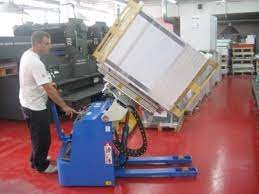
In my early days as an engineer, I saw the physical toll that manual handling took on people. I saw strong workers develop chronic back pain that affected their lives both inside and outside the factory. This is why, when I founded SHJLPACK, making equipment safer was a personal mission. A pallet inverter isn't just about speed and money; it's about protecting your people.
Engineering Out the Hazard
The core principle of modern workplace safety is the "Hierarchy of Controls." The most effective way to make a task safe is not to give workers better training or protective equipment, but to eliminate the hazard entirely. This is exactly what a pallet inverter does.
Manual pallet handling involves several high-risk movements:
- Bending and Lifting: Workers repeatedly bend down to pick up boxes from one pallet and lift them onto another. This puts immense strain on the lower back (lumbar spine).
- Twisting: They often have to twist their torso while holding a heavy load, which is a leading cause of spinal disc injuries.
- Repetitive Strain: Performing these motions hundreds of times a day leads to cumulative trauma disorders in the back, shoulders, and wrists.
A pallet inverter replaces all of these dangerous movements with a simple, automated hydraulic or electric process. The operator uses push-button controls from a safe distance. The machine does all the heavy work.
The Human and Financial Impact of Safety
Improving safety has benefits that go far beyond just feeling good about protecting your workers. These benefits have a direct impact on your company's finances and reputation.
| Benefit Area | Impact of Manual Handling | Impact of Pallet Inverter |
|---|---|---|
| Worker Injuries | High rates of back strain, hernias, and repetitive stress injuries. | Risks are virtually eliminated. The task becomes one of supervision, not labor. |
| Insurance & Compensation | Higher premiums for workers' compensation insurance. Direct costs from claims. | Lower insurance premiums due to a safer risk profile. Fewer claims. |
| Employee Morale & Turnover | Physically demanding work leads to burnout and high turnover. Difficult to retain experienced staff. | Work becomes less physically taxing. Employees feel valued and protected, improving retention. |
| Regulatory Compliance | Constant risk of failing safety audits or violating labor laws regarding safe lifting limits. | Easily meets and exceeds national and international occupational safety standards (e.g., ISO 45001). |
A client of mine who runs a cold storage facility faced a major problem with employee turnover. The job of manually restacking frozen food boxes in a -20°C environment was brutal. After they installed a pallet inverter with a heated cabin for the operator, their turnover rate in that specific role dropped by 70%. They kept their experienced workers, which improved overall efficiency far more than they had initially predicted. They bought the machine for speed, but they kept it for their people.
My Insights: How SHJLPACK Provides More Than Just a Machine
Over the years, I've seen many companies buy a piece of equipment, only to have it underperform because it wasn't the right fit for their unique process. A machine on its own is just a tool. But a tool is useless without the knowledge of how to use it properly. When I started my journey, from an engineer on the factory floor to owning my own business, I learned a crucial lesson: success comes from partnerships, not just transactions. My clients didn't just need a machine; they needed a solution to their problem. They needed someone who understood their business and could help them grow.
This is the philosophy behind SHJLPACK. We don't see ourselves as just selling pallet inverters or wrapping machines. Our mission, as our slogan says, is to provide a "TOTAL SOLUTION FOR WRAPPING MACHINE." This means we act as a strategic partner, not a simple supplier. We start by listening to your challenges—whether it's high energy costs, aging equipment, or the need to digitize your operations.
For a business leader, the key questions are always about performance, stability, and return on investment. You need to be sure that any new equipment will not only work but will integrate seamlessly into your long-term strategy. This is where we go deeper.
- We Analyze Your Process: Before we recommend any machine, we want to understand your entire workflow. Where are the real bottlenecks? What are your specific material handling needs? We might find that a standard machine isn't the best fit, and a custom solution with specific loading or safety features is required.
- We Focus on ROI: We help you do the math. We'll work with you to analyze the potential savings in labor, reduced product damage, and increased throughput, just like the examples I've shared. We want you to be confident in the financial case before you make a decision.
- We Support You for the Long Term: Our relationship doesn't end when the machine is delivered. We provide support for installation, commissioning, and training. And most importantly, we are here to provide advice on maintenance and future upgrades. As you move towards greater automation and digitalization, we can help you ensure your equipment evolves with your factory.
This approach is born from my own gratitude for this industry. It gave me the opportunity to build a life and achieve financial independence. Now, my goal is to give back by sharing that knowledge and helping other business owners, whether in Turkey, Mexico, or anywhere else in the world, achieve their own success. We are a knowledge-sharing platform first, and a machine builder second.
Conclusion
Turkish manufacturers are choosing pallet inverters not just as machines, but as strategic tools for growth, safety, and efficiency. This investment is a key step towards a modern, competitive future.


